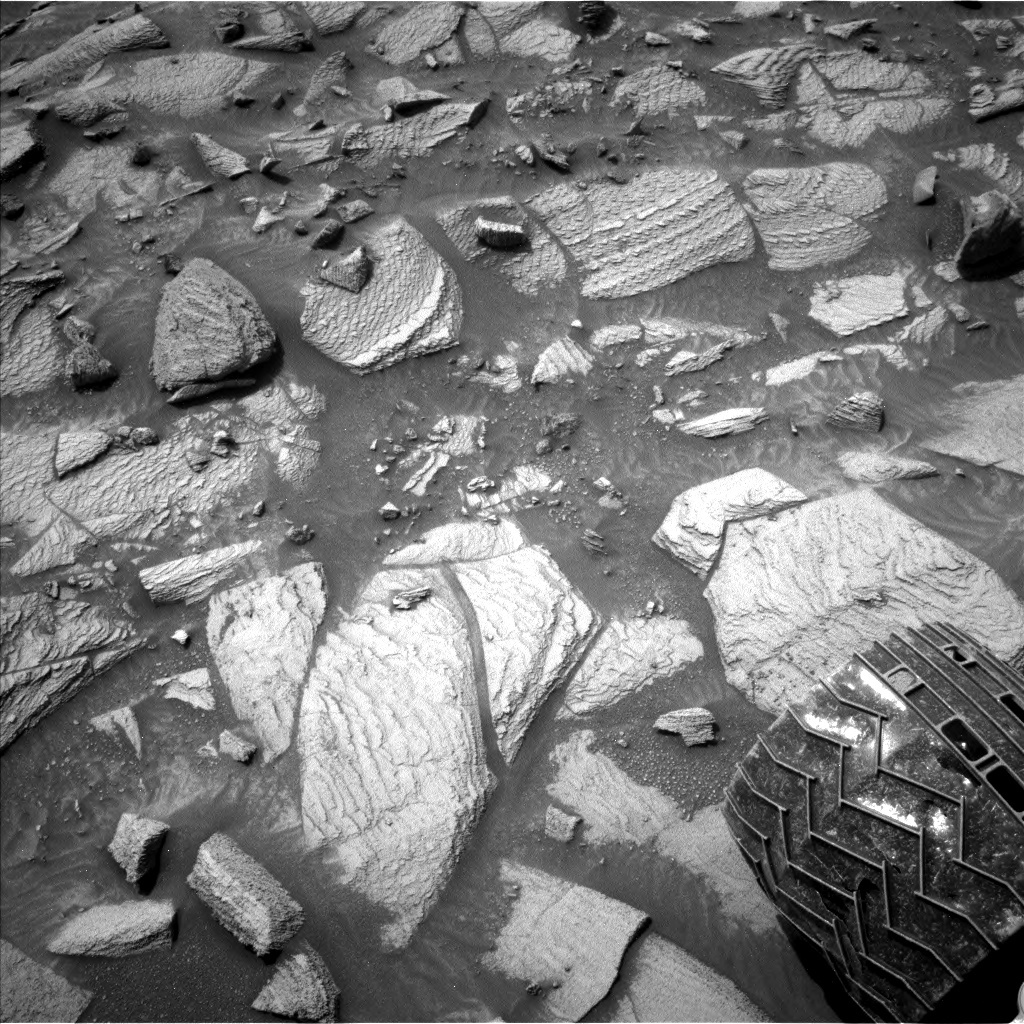Earth planning date: Monday, April 15, 2024
On most sols of planning, the science team does their best to balance collecting new observations of the "typical" with the "unusual." The dividing line between those is subjective, but informed by the collective imaging and chemistry observations of the rover over weeks, months, or even years of time. We want "typical" observations to make sure we are capturing the dominant lithology type and keeping systematic track of it. We want "unusual" observations because they might indicate a change in the rock type or chemistry that reveals a new geologic process or regime on Mount Sharp.
Today's planning was no different. "Typical" bedrock was captured in the DRT target, "Tioga Pass," by MAHLI and APXS, and in multiple Mastcam and ChemCam RMI mosaics of both the bedrock along the trough surrounding the upper Gediz Vallis Ridge and the ridge itself. "Unusual" bedrock in the workspace was targeted by MAHLI, APXS, and ChemCam. MAHLI and APXS will work together on the "Wonder Lakes" target which had a much rougher, holey texture than typical bedrock, and MAHLI alone will image a block, "Peppermint Pass,' whose red and white mottled color stood out. ChemCam targeted a separate rough-textured block with a darker-than-typical color at "The Hermit." But the true eye-opener of the day was the target "Sawblade." Sawblade is among the blocks visible along the top of the image above with the texture that was described by team members with terms like "wavy," "tire tracks," and "dragon scales." We have seen a lot of layered rocks over the last 12 years on Mars, but these ones really stand out by the dizzying pattern they trace on the rock surfaces. ChemCam will check out the chemistry and texture of Sawblade and Mastcam will acquire a mosaic over this whole set of blocks so we can get a closer look at these wild new wonders.
Even atmospheric observations can be classified by "typical" and "unusual" categories. Unusual is reserved for events like monitoring development of dust storms that pass over Gale, as we did last month. This plan had a typical environmental science suite, with REMS, RAD, and DAN passive dispersed judiciously through the sols, and three separate blocks of observations monitoring clouds, dust devils, dust in the atmosphere, and changes in the significant amount of sand and dust on our rover deck.
After the drive in today's plan, who knows what we will find next??
Written by Michelle Minitti, Planetary Geologist at Framework

Comments
Post a Comment